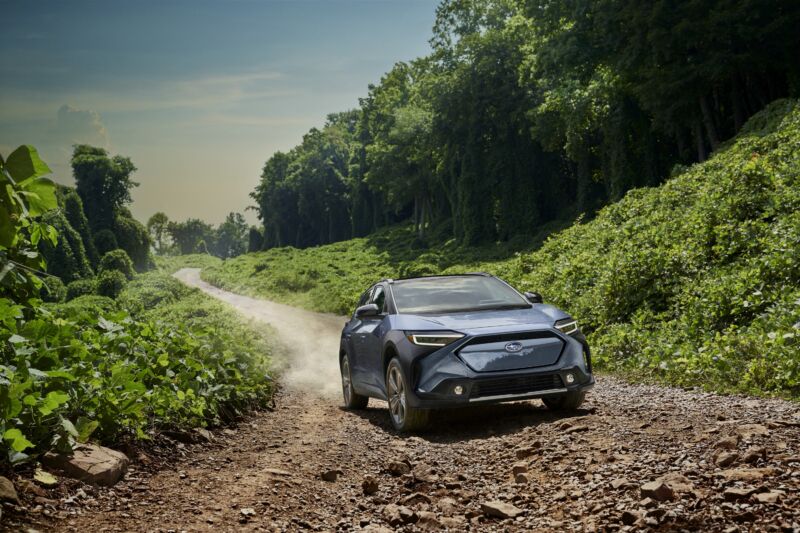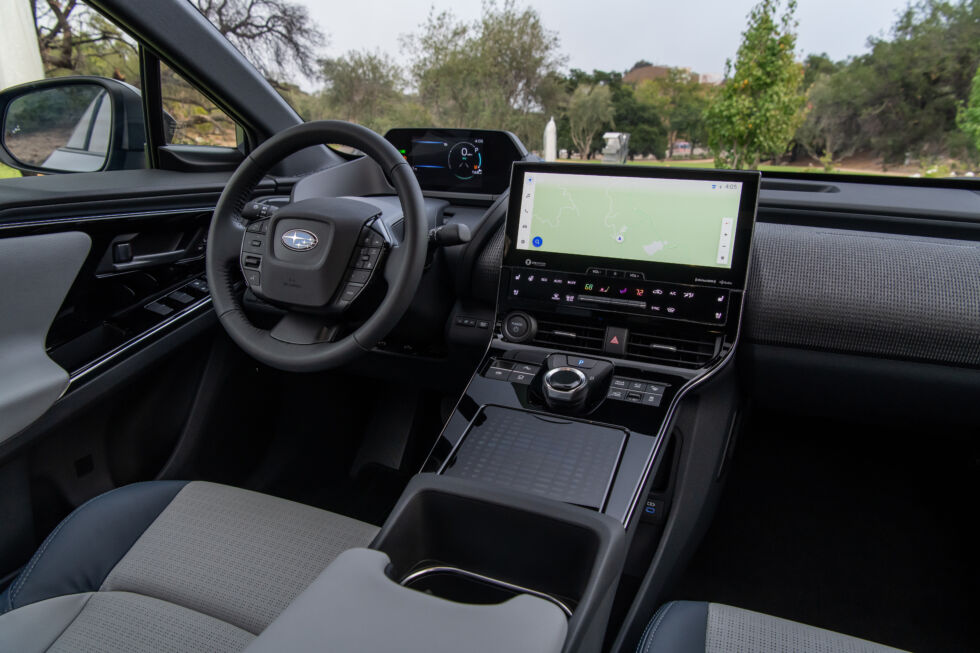
Subaru
Over the years, Subaru has generated a cult following in the US, making its name with all-wheel drive powertrains and a go-anywhere attitude. Cars like the rally-bred WRXes and STIs did a lot of work here, but lately, Subaru has seemed to go in the opposite direction, phasing out fun drives like the STI lineup in favor of volume-movers like the Ascent and bloated versions of existing models such as the Subaru Wilderness editions.
Its first electric vehicle is perhaps even less in character. The $44,995 Solterra is the result of an ongoing partnership with Toyota and was developed together with the bZ4X. Unlike the Toyota, there’s no single-motor option for the Solterra. It’s all-wheel-drive only, with a pair of identical 107 hp (80 kW) permanent magnet electric motors, one for each axle. That means you can do some, but not all, of the off-road things you’d expect to do with a Subaru.
Looks are deceiving
At first glance, the Solterra looks like the edgy, tech-leaning offspring of a Crosstrek and an Impreza wagon. The 8.3 inches of ground clearance is slightly less than the Outback or Forester, while the Solterra comes in at 184.6 inches (4,689 mm) in length, placing it squarely in the middle of the brand’s stable. It’s a rather compact SUV, even more so when you try to get comfortable in the cockpit. My short frame was cramped, and anyone taller than me won’t feel welcome on long drives.

Subaru
In what seems to be the norm with Subaru these days, the interior is full of plastic and cloth. Even on this top-line Touring trim test car, which comes in at just under $55,000, there’s a very cheap-looking dash with a plethora of rigid lines. Controls are close by, but the overall layout is borderline infuriating, with slow response times through the central infotainment system and a driver alert system that beeped and shrieked every 20 seconds for one reason or another. There were so many driver warnings and advisories popping up that I eventually tuned them out, which is probably not the intended effect.
Range Non-Rover
There’s about five miles (8 km) of charging difference between the 228-mile (367 km) Premium trim level and the Limited and Touring trims, which have an EPA range of 222 miles (357 km) on a single charge of the 72.8 kWh lithium-ion battery. In my 10 days with the car, the only time I eclipsed 200 miles (321 km) was leaving my driveway with the range reading 201. After about 10 minutes, it slumped back under 200 miles. In fairly normal city and highway conditions, I realized around 180 miles of range (290 km). When the weather called for air conditioning, I lost another 5–7 miles (8–11 km).
-
The Solterra is 184.6 inches (4,689 mm) long, 73.2 inches (1,859 mm) wide, 65 inches (1,651 mm) tall, with a 112.2-inch (2,850 mm) wheelbase. It has a curb weight of between 4,365 and 4,505 lbs (1,980–2,043 kg) depending on trim level.
Subaru -
The Toyota-developed infotainment system can be laggy.
Subaru -
The back seat has 35.5 inches (902 mm) of rear legroom.
Subaru -
There’s 27.7 cubic feet (783 L) of cargo volume with the rear seats in use and the cover in place.
Subaru -
Wireless device charging, as well as wireless Apple CarPlay and Android Auto, are available in the Limited and Touring trims.
Subaru
Charging is slow, however. A stop to recharge from about 20 to 80 percent state of charge took the better part of 45 minutes. At launch, the Solterra was rated at an even longer 56 minutes to DC fast-charge to 80 percent, but for model year 2024, Subaru says that in ideal conditions, this should now be as quick as 35 minutes.
Charging at home was an overnight endeavor—nine hours on a level 2 charger. The Solterra currently features a CCS1 charge port, but in 2025, the company will adopt the J3400 standard, with adapters made available to existing customers so they can charge at Tesla Supercharger sites.
